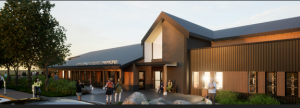In the kingdom of the office highrise, keeping up with the Joneses is critical.
But staying competitive and remaining fully leased isn’t easy if your building is 30 or 40 years old.
Aging cladding systems for one can be a building owner’s worst enemy, said Scott Armstrong a senior facade specialist with Building Sciences at WSP.
“We’re facing legislation on energy benchmarking and competing (new) office buildings that are much more energy efficient and more comfortable to be in,” he said.
Armstrong, who gave a seminar at the Construction Specifications Canada (CSC) Building Expo in Toronto recently on cladding system failures and upgrade options, said it is “an age of renewal” in which older office building facades are ripe for some type of retrofit.
“It’s a real estate hot potato,” said Armstrong, noting renewal is vital to stay competitive and the improvement options are often wide ranging.
Typically, a 1970s office building has single glazing and is “thermally terrible, probably leaks air and most likely leaks water,” he said.
So what is the best way of upgrading it?
A retrofit “has many meanings” including “a full re-imagination of a cladding system short of replacement,” Armstrong explained.
Switching over to a double-glazed system and introducing thermal breaks is a prime example, Armstrong said.
The project can be done overnights when the building is vacant, “probably without having to move desks away from the walls. I can improve my occupancy comfort, improve my acoustics and check off a lot of the boxes for the owner,” said Armstrong, pointing out that WSP has about 200 building science specialists across the country managing about $300 to $500 million worth of construction projects annually.
For less cost, a “solar sash design” can be installed inside the building but it won’t improve thermal performance of the mullion sections, said Armstrong.
He said where a retrofit can get complex — and costly — is on a full cladding system replacement.
A case in point is the former Simpson Tower in downtown Toronto, which is being upgraded with a new curtainwall hung outboard of the existing precast cladding.
Along with improving energy performance and comfort level, it gives the building a “new look.”
WSP is the consultant on job.
He said right from the get-go, the planning process of a facade retrofit can be “a detailed and arduous process” requiring extensive information about the building that is not always readily available.
“There are always a ton of surprises,” he said, adding a performance audit, building assessment or capital plan alone won’t provide enough information to commence a retrofit.
Armstrong said if an owner spends $1 million annually on repairs to cladding, a $15 million new system might be smart because it eliminates expenditures for 20 or 30 years.
“It’s also a mitigating safety risk; it is a comfort issue,” he said.
Owners need to look at all their options, he said, noting an example in which WSP evaluated alternatives including an extended maintenance program, selective replacement and full renewal and recladding.
Not to be underestimated is tenant discomfort which can be mitigated through construction logistics.
“Driving a fastener into an aluminum framing system with a hammer drill will be heard from 20 floors away,” he added.
Furthermore, in big city cores like Toronto noise is a concern not just in the day but at night because many of the neighbouring buildings popping up are residential towers.
“Existing buildings are hard to work on,” he said, adding not every contractor can do renewal work. “These buildings don’t match the as-built drawings from 40 years ago and they are probably not straight anymore (resulting from gravity and wind pressure). Tolerances are an entirely different animal in a 40-year-old building than in modern construction.”
Armstrong told delegates that the office building renewal industry could “mirror the LEED race” about a decade ago when owners of existing buildings were in competition with new building owners to gain LEED certification.
“We have to think beyond facade and look at the integration of HVAC and building renewal as a whole. My tagline is every existing building is a case study in renewal just waiting to happen,” he said.











Recent Comments